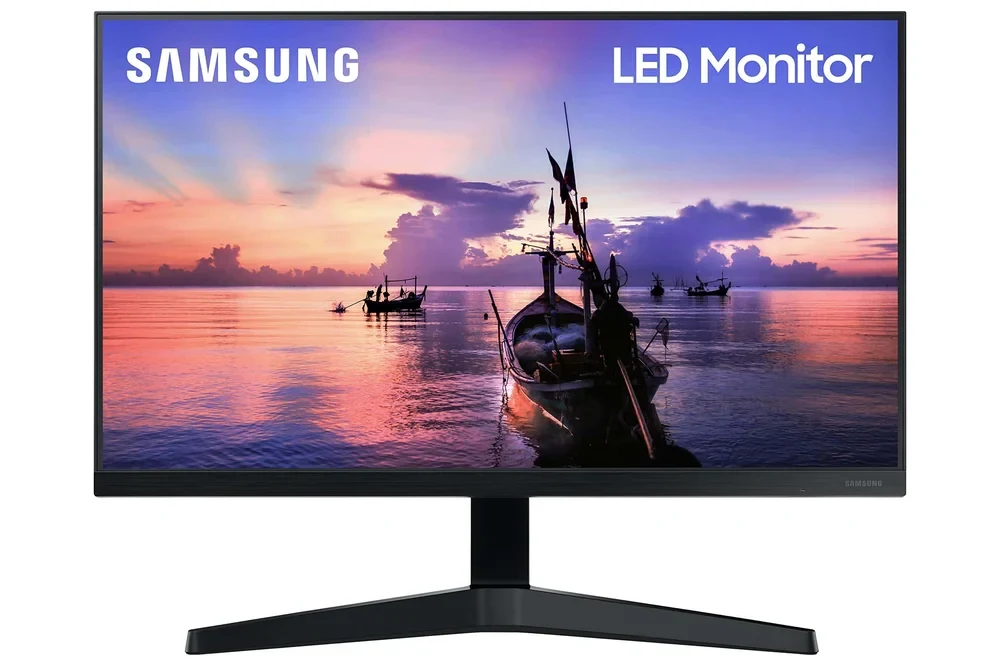Understanding the advantages and disadvantages of LED monitors can help users opt for a display technology that best aligns with their requirements. With these insights, one can make an informed choice between LCD and LED monitors based on individual needs and preferences.
Perhaps the biggest disparity between the two common monitors is that LCDs use liquid crystals to produce the picture, while LEDs use light-emitting diodes.
This fundamental difference is what lends LEDs a competitive edge in terms of brightness, lifespan, and power consumption.
It’s essential to mention that not all LED monitors are created equally. Some may offer better color reproduction while others may excel in the viewing angle department. Similarly, certain models may highlight the advantages and disadvantages of LED displays, such as their vibrant color representation but higher cost compared to LCD screens.
Understanding LED Monitors

Delving deeper into the world of LED monitors, it’s important to note their intricate yet fascinating design and to understand both the advantages and disadvantages these devices present. One factor is their superior energy efficiency and sometimes higher cost compared to traditional LCDs. The ultra-bright visuals of LED displays stem from the thousands of minuscule diodes that form their pixels, a unique feature that isn’t found in LCDs.
LCD technology utilizes an entirely different approach, relying on liquid crystals to illuminate their screens. This fundamental difference is what sets the two technologies apart, with LED generally being favored for its power efficiency, extended lifespan, and increased brightness.
While LED displays generally outperform their LCD counterparts in numerous aspects, it’s crucial to consider the negatives associated with LED technology. The more significant cost associated with LED monitors is a noticeable drawback that might deter some consumers. Despite LEDs being known for their superior brightness and color accuracy, the advantages and disadvantages of such technology should be considered thoroughly before deciding between an LCD or LED display.
LED vs LCD: A Comparative Study

The debate between LCS and LED monitors often boils down to the specific monitor’s performance capabilities, such as response time, picture quality, and viewing angle.
LED monitors tend to offer a faster response time, making them ideal for gaming and other activities requiring swift screen changes. Some users may not fully appreciate the difference in speed, making this an advantage that remains specific to particular use cases.
In terms of picture quality, LEDs often win over LCDs due to the ability to achieve accurate color reproduction. One cannot overlook the fact that the advantages and disadvantages of LEDs and LCDs highlight the importance of individual needs and preferences. For instance, a graphic designer might prioritize color accuracy and hence opt for a high-quality LED monitor, known for its high contrast and vivid color representation. Moreover, those utilizing the monitors every single day may appreciate the longer lifespan of an LED monitor, giving it an edge for home and office use and making it a popular choice d.
| LED Monitors | LCD Monitors |
|---|---|
| Longer lifespan, suitable for home and office use | Shorter lifespan compared to LED monitors |
| Faster response time, ideal for gaming | Slower response time, may not be ideal for high-speed gaming |
| High picture quality with accurate color reproduction | Color reproduction may not be as accurate as LED monitors |
| High contrast and vivid color representation, preferred by graphic designers | May not offer as high contrast and vivid color representation |
Unveiling the Advantages of LED Monitors
Technology leaders are constantly debating the differences between LCD and LED monitors, assessing the benefits and disadvantages of each type. While LED screens offer a high-quality display with faster response time and power efficiency, they may also have their drawbacks.
The main disadvantage is usually the higher initial cost compared to their LCD counterparts. However, considering the lifespan, energy savings, and picture quality, the investment in LED screens oftentimes pays off in the long run.
LCD monitors, on the other hand, use liquid crystal display technology and backlighting, typically with cold cathode fluorescent lamps (CCFLs). LCDs are less expensive than LEDs initially but can consume more power.
In terms of picture quality, they deliver stable and high-quality images but may not match the vibrancy and sharpness of LED screens.
Highlighting the Disadvantages of LED Displays
Displaying vibrant colors or white images on the monitor can reveal the disadvantage of LCD screens compared to LEDs in terms of brightness, lifespan, and power consumption.
With their superior brightness and high-quality image, LEDs are widely used in outdoor environments where visibility is paramount. LED technology offers a faster response time which is essential for use in applications where real-time data is displayed.
These monitors also use several LED panels together, delivering better picture quality and wider viewing angles. The lifespan of these displays is also longer than LCD monitors, making them a cost-effective solution in the long run.
When comparing LCD and LED monitors, several factors come into play. While LEDs have proven to be more beneficial overall, LCDs also have positive aspects. For instance, these displays use liquid crystals that are illuminated by a backlight, often a fluorescent lamp. This traditional approach offers several advantages, one of which is superior color reproduction on an LCD screen, overcoming the disadvantage of reduced brightness often tied to LEDs.
LCD and LED Displays
- LED displays have superior brightness and high-quality images, making them ideal for outdoor environments.
- LED technology offers a faster response time, essential for displaying real-time data.
- LED monitors use several panels together, delivering better picture quality and wider viewing angles.
- LED displays have a longer lifespan than LCD monitors, making them a cost-effective solution in the long run.
LED Display Technology: An Overview
Although both LCD and LED monitors use liquid crystal displays (LCD), the primary difference lies in the backlighting method which significantly impacts the picture quality and response time of the display technology. LCD monitors rely on cold cathode fluorescent lamps (CCFL) for backlighting, whereas LED monitors use light-emitting diodes.
This integral shift in display technology considerably reduces power consumption and enhances image quality. With the use of LED display technology, outdoor advertising is experiencing a radical transformation.
LED screen advertising is now a preferred choice for businesses globally due to its capability to grab the attention of the audience with high-quality pictures. One potential downside is the possibility of light pollution in areas where multiple LED screens are used together.
In terms of lifespan, LED display has a clear advantage over LCD. LED monitors are known to last three times longer than LCD monitors, providing superior picture quality and faster response time despite the potential disadvantages of LED display technology.
Power Consumption: LED vs LCD
LED display technology, which utilizes multiple diodes for each pixel, is renowned for its durability and superior performance, particularly in outdoor LED applications. In comparison, LCD screens may not fare as well in terms of longevity due to the consistent demand for backlighting.
Another key difference between these display technologies lies in the quality of imagery. LED displays offer a greater range of color, high-quality image reproduction, and superior brightness. This is due to the use of individual diodes that emit light, providing enhanced color accuracy.
In contrast, LCDs use liquid crystals to modulate light, which can limit their color reproduction capability. Despite these advantages, one potential disadvantage of LED screens is their cost.
They tend to be more expensive than LCD monitors, largely due to the complexity of their design. For budget-conscious individuals or businesses, this might be a deciding factor. In terms of environmental impact, LED displays are superior to liquid crystal displays (LCDs) as they consume less power and have a longer lifespan due to their robust LED technology.
Key Facts about LED and LCD Display Technologies
- LED display technology is known for its durability and excellent performance, particularly in outdoor applications.
- LED displays offer superior image quality with a wider range of colors, high-quality image reproduction, and increased brightness due to the use of individual diodes.
- LCD screens may have limitations in color reproduction as they use liquid crystals to modulate light.
- Despite their superior performance, LED screens are typically more expensive than LCD monitors due to the complexity of their design.
- LED displays are more environmentally friendly than LCDs as they consume less power and have a longer lifespan.
The Lifespan of LED Monitors

Using high-quality LEDs offers superior image quality and is more environmentally friendly than traditional LCDs and fluorescent billboards.
LEDs are known for their wide viewing angles and better color reproduction when compared with LCD. They consume less power, making them environmentally friendly.
However, LED technology is not without its disadvantages. One potential downside is that they can be more expensive than their LCD counterparts. When comparing LED and LCD monitors, it’s crucial to point out that both types of screens utilize liquid crystal displays.
The difference lies in the backlighting method. While LCD screens use fluorescent bulbs, LED screens use light-emitting diodes, which are more energy efficient and have a longer lifespan.
In terms of picture quality, LED monitors often outperform LCDs with higher contrast ratios and color accuracy. Utilizing environmentally friendly LED displays also reduces light pollution and improves image quality.
The Impact of Viewing Angle in LED Monitors
LED displays offer superior color reproduction and consume less power. With the use of several LED panels together, LED displays can enhance the overall visual experience by providing wider viewing angles.
Besides viewing angle, another advantage of LED monitors includes lower power consumption. They require significantly less energy compared to traditional LCDs that use fluorescent bulbs for backlighting.
This power reduction can be attributed to the light-emitting diode technology that powers LED monitors, making them more environmentally friendly. While LED displays carry their advantages, they also come with potential disadvantages.
Some users may find LED monitors too bright, potentially causing eye strain over extended use. As the screen size increases, so does the power consumption and the risk of light pollution.
It’s also worth mentioning the difference between LCD and LED monitors in terms of picture quality. LED monitors, utilizing light-emitting diode technology, offer superior color reproduction and consume less power, making them an efficient choice for many users.
LED Displays
- LED displays provide wider viewing angles, enhancing the overall visual experience.
- They consume significantly less energy compared to traditional LCDs, making them more environmentally friendly.
- LED monitors, powered by light-emitting diode technology, offer superior color reproduction.
- Increased screen size in LED monitors can lead to higher power consumption and potential light pollution.
LED Monitors: An Environmentally Friendly Choice

LED technology does not only improve image quality but also benefits the environment, as these monitors use light-emitting diode bulbs which consume less power. This ensures color accuracy and faster response while performing tasks like screen advertising or when several LED panels are used together to illuminate a space.
Another key advantage of LED monitors is their lifespan. LEDs are more durable and long-lasting compared to fluorescent bulbs used in LCDs, significantly reducing replacement costs.
The use of light-emitting diodes provides a higher range and definition of colors, ensuring high-quality image reproduction.
Coupled with an even faster response time compared to traditional monitors, LED displays offer an unparalleled visual experience. However, No technology is without its drawbacks.
One disadvantage of LED monitors is their cost. While they offer a host of benefits, these advantages come with a higher price tag compared to traditional LCD monitors.
This makes them a slightly less appealing choice for budget-conscious consumers. Another potential disadvantage is the color accuracy of LED monitors, which may not accurately reflect the actual colors when used for design or graphic work.
The Role of Pixel and Backlight in LED Monitors

Computer usage with modern monitors known as LCD or LED displays offers a reduction in eye strain, as they emit light evenly across the entire screen. The main difference between LCD and LED screens lies in the lighting technology used.
Traditional LCD screens make use of fluorescent lights as a source of backlight, while LED screens use light-emitting diodes. This fundamental difference leads to several advantages of LED screens over their LCD counterparts.
For one, LED screens are known for their superior brightness and contrast. The diode-based lights of an LED screen can display deep blacks and pure whites more effectively, resulting in a more vibrant and dynamic image quality.
LED screens also come with an advantage in terms of power consumption. LEDs consume less power than fluorescent lights, making LED monitors a more energy-efficient choice. In light of their superior features, modern monitors primarily utilize these perfect LED technologies to reduce eye strain and enhance the overall gaming experience.
LCD and LED Screens
- LED screens use light-emitting diodes as a source of backlight, unlike LCD screens which use fluorescent lights.
- LED screens offer superior brightness and contrast, displaying deep blacks and pure whites more effectively for a vibrant and dynamic image quality.
- LEDs consume less power than fluorescent lights, making LED monitors a more energy-efficient choice.
- Modern monitors primarily utilize LED technologies to reduce eye strain and enhance the overall gaming experience.
Choosing LED over LCD: A Wise Decision?
LEDs are typically more energy-efficient than traditional LCD ones, offering benefits like wide viewing angles, better image quality, and the use of a light sensor for adaptive brightness. For example, an LED display uses light-emitting diodes for its backlighting, whereas an LCD screen relies on cold cathode fluorescent lights (CCFL).
The latter uses more energy and can impact the environment negatively compared to LED screens. LEDs also have color accuracy and better image quality due to their ability to achieve full brightness almost immediately.
This quality is especially important for displays used in outdoor environments or in high-quality, professional settings where image quality is crucial. It’s worth noting that LED displays can potentially emit more light pollution into the environment than LCD ones.
As these displays are often brighter, they can cause more light to spill into surrounding areas. This is a major disadvantage for those concerned about wide viewing angles, as traditional LCD screens simply cannot provide the same clarity and precision as LEDs and LCDs that use liquid crystals for better image quality.
The Future of Display Technology: LED Screens.

It is essential to note that LED displays offer a wide variety of advantages, surpassing their LCD counterparts, such as a wider range and definition, an even faster response time, and the ability to use LEDs as a backlight to illuminate the screen. Compared to LCDs that use fluorescent bulbs for backlighting, LED displays use LEDs, which significantly reduces their power consumption, resulting in cost savings.
Also, they achieve full brightness almost instantly, providing an even faster response time. LED monitors use diodes, setting them apart from traditional LCD monitors that employ the use of liquid crystals.
This difference results in a distinct advantage: LED screens can display the entire screen evenly, avoiding the common disadvantage of screen-size limitations faced by several LCD panels, thereby producing high-quality image quality. The benefits of LED technology extend beyond the range and definition of the display, offering an environmentally friendly use of LEDs that requires times less energy compared to traditional displays.
LED Displays
- LED displays use LEDs for backlighting, significantly reducing power consumption and resulting in cost savings.
- LED screens achieve full brightness almost instantly, providing an even faster response time than LCDs.
- Unlike LCD monitors that use liquid crystals, LED monitors use diodes, allowing them to display the entire screen evenly and avoid screen-size limitations.
- LED technology is environmentally friendly, requiring less energy compared to traditional displays.






